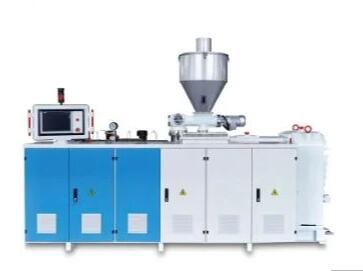What is the difference between injection molding machines and extrusion machines
2023-10-30
Injection molding machines and extrusion machines are two distinct types of plastic machinery, each designed for specific manufacturing processes. While both are used in the plastics industry, they differ in their operation, applications, and the end products they produce. Here are the key differences between injection molding machines and extrusion machines:
Injection Molding Machines:
1. Operation: Injection molding machines work by melting plastic material in a barrel, then injecting it into a mold cavity. The plastic material solidifies inside the mold to create a specific three-dimensional shape.
2. Applications: Injection molding is primarily used to produce three-dimensional, solid plastic products with complex shapes, such as automotive components, consumer goods, toys, and medical devices.
3. Shapes: Injection molding is ideal for creating intricate, detailed, and precision parts. It is suitable for products with varying thicknesses and intricate geometries.
4. Mold: Injection molding uses molds, which consist of two halves that close together to form the final product's shape. These molds are typically steel or aluminum and are designed to withstand high pressures and temperatures.
5. Materials: Injection molding is suitable for both thermoplastic and thermosetting plastic materials, as the process involves melting and solidifying the material.
6. Clamping: Injection molding machines have a clamping unit that applies pressure to hold the mold closed during the injection process.
7. Product Size: Injection molding is commonly used for producing small to medium-sized parts, but large-scale machines are available for larger components.
8. Examples: Common examples of products made using injection molding include plastic containers, automotive dashboards, medical syringes, and consumer electronics.
Extrusion Machines:
1. Operation: Extrusion machines push molten plastic material through a shaped die to create continuous, linear profiles, sheets, films, or pipes. The material maintains a consistent cross-sectional shape as it exits the machine.
2. Applications: Extrusion is used for producing long, continuous shapes with a consistent cross-section. Common applications include plastic sheets, films, pipes, tubing, profiles, and cables.
3. Shapes: Extrusion is best suited for producing two-dimensional shapes with uniform cross-sectional dimensions, making it ideal for linear or planar products.
4. Die: Extrusion uses dies, which are specialized tools with a specific shape that determines the cross-section of the extruded product.
5. Materials: Extrusion is primarily used for processing thermoplastic materials, as it relies on the ability to melt and shape the material under pressure.
6. Cooling: Extrusion machinery typically includes cooling systems to solidify the plastic as it exits the die.
7. Product Size: Extrusion is used for both small and large products. The length of the product can be practically unlimited, depending on the machinery and production requirements.
8. Examples: Common examples of products made through extrusion include plastic films for packaging, PVC pipes, window profiles, and weatherstripping for doors and windows.
In summary, injection molding machines are designed for creating three-dimensional, intricate, and precision parts, while extrusion machines are used for producing continuous, two-dimensional profiles, sheets, and linear shapes. The choice between these two types of machinery depends on the desired product, its dimensions, and the specific plastic materials being used in the manufacturing process.



